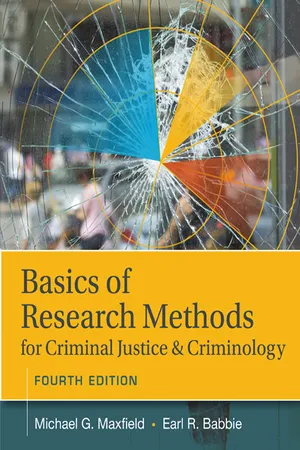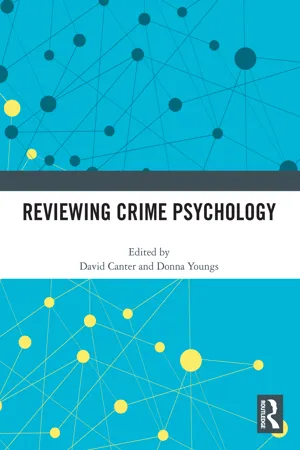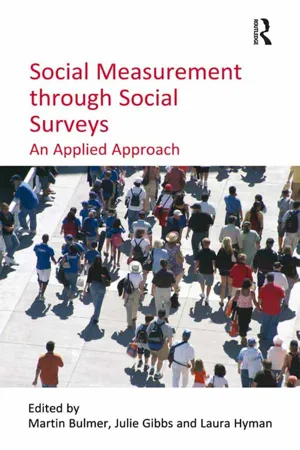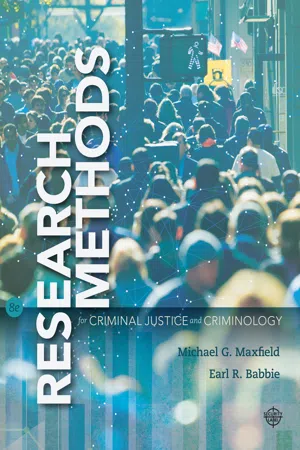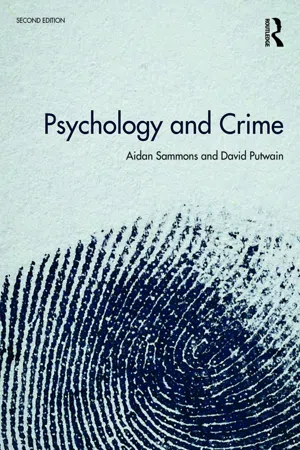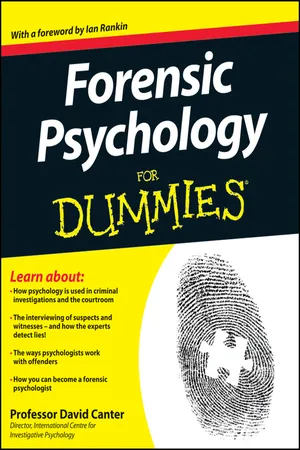Psychology
Measuring Crime
Measuring crime involves quantifying the occurrence and prevalence of criminal activities within a given population. This process often includes the use of various statistical methods and data collection techniques to assess the frequency and types of criminal behavior. By measuring crime, psychologists can better understand the nature and extent of criminal activities, which can inform the development of effective interventions and policies.
Written by Perlego with AI-assistance
Related key terms
1 of 5
7 Key excerpts on "Measuring Crime"
- Marko Nikolic(Author)
- 2019(Publication Date)
- Society Publishing(Publisher)
Measuring Crime 6 CONTENTS 6.1. Introduction .................................................................................... 116 6.2. Measuring Crime And Crime Victimization ..................................... 118 6.3. The Measurement of White-Collar Crime Using Uniform Crime Reporting (UCR) Data .......................................... 122 6.4. Quantitative Methodologies To Measure Non-Economic Violence ....................................................................................... 123 6.5. The Official Mode of Measuring Crime: The Uniform Crime Reports (UCR) .................................................................... 125 6.6. Challenges Associated With Measurement of Crime ........................ 127 References ............................................................................................. 133 Research Methods in Criminal Justice and Criminology 116 Crime is that one thing which is full of complexities and for any individual, whether an expert or a researcher, it is a difficult task to measure crime. Crime victimization could be defined as that situation wherein an individual gets prone to a crime and has an extensive impact over a long period of time on the victim. This chapter would help the readers to understand the meaning of victimization and all those methodologies that are required to measure economic violence, non-economic violence, and crime. The chapter highlights the official mode of Measuring Crime which was defined by the Uniform Crime Reports (UCR). Also, discussed are the challenges that are associated with the measurement of crime. 6.1. INTRODUCTION Criminology is the scientific study of the nature, extent, management, causes, control, consequences, and prevention of criminal behavior, both on individual and social levels.- Michael Maxfield(Author)
- 2015(Publication Date)
- Cengage Learning EMEA(Publisher)
Measuring Crime Different approaches to Measuring Crime illustrate basic principles in conceptualization and measurement. By way of illustrating basic principles in measure-ment, we now focus more specifically on different 94 PART 2 STRUCTURING CRIMINAL JUSTICE INQUIRY Copyright 2016 Cengage Learning. All Rights Reserved. May not be copied, scanned, or duplicated, in whole or in part. Due to electronic rights, some third party content may be suppressed from the eBook and/or eChapter(s). Editorial review has deemed that any suppressed content does not materially affect the overall learning experience. Cengage Learning reserves the right to remove additional content at any time if subsequent rights restrictions require it. ways of Measuring Crime. Crime is a fundamental dependent variable in criminal justice and criminol-ogy. Explanatory studies frequently seek to learn what causes crime, whereas applied studies often focus on what actions might be effective in reduc-ing crime. Descriptive and exploratory studies may simply wish to count how much crime there is in a specific area, a question of obvious concern to criminal justice officials as well as researchers. Crime can also be an independent variable— for example, in a study of how crime affects fear or other attitudes, or of whether people who live in high-crime areas are more likely than others to favor long prison sentences for drug dealers. Some-times crime can be both an independent and a dependent variable, as in a study about the relation-ship between drug use and other offenses. General Issues in Measuring Crime At the outset, we must consider two general ques-tions that influence whatever approach we might take to Measuring Crime: (1) How will we concep-tualize crime ? and (2) What units of analysis should be used? Conceptualization Let’s begin by proposing a conceptual definition of crime—one that will ena-ble us to decide what specific types of crime we’ll measure.- eBook - ePub
- David Canter, Donna Youngs, David Canter, Donna Youngs(Authors)
- 2020(Publication Date)
- Routledge(Publisher)
In studying crime, researchers struggle with a variable that is inherently difficult to measure (Osgood, McMorris, & Potenza, 2002). Nevertheless, researchers have developed multiple ways of measuring delinquency and criminal conduct, giving rise to the criminological knowledge that is essential in all developed societies (e.g. crime statistics, criminal careers, risk factors, intervention effectiveness, etc.). Unfortunately, current measures of crime are recognized as being deeply flawed, and it has become a common practice in criminological studies to attach warning labels about potential validity problems and to point out that different methods may result in different estimates of crime (Enzmann, 2013).In this article, we present the major issues in Measuring Crime, a brief historical overview of the development of measurement techniques and a review of the primary methods of measuring criminal conduct. In describing these different methodologies, we will consider the advantages and limitations of each method, in order to achieve a broad and integrated understanding about crime and delinquency methods of measurement.Definition and units of measurement
The generally accepted definition of crime seems to be a legal definition: ‘any act committed in violation of a law that prohibits it and authorizes punishment for its commission’ (Wilson & Herrnstein, 1985, p. 22). However, this definition presents several problems; for example, laws have to be understood in time and space. Because laws are subject to change, many behaviours that were classified as crimes 20 years ago may not be considered as crimes today, and vice versa. Moreover, since laws are the subject of political decisions, what is considered crime in one country may not be viewed as crime in another, which is a potential limitation for comparative research between different countries. For example, in Portugal, the acquisition, possession, and use of small quantities of drugs were decriminalized in 2001 (Greenwald, 2009). Although drug usage is still prohibited, no punishment is applied, so drug usage is not a crime in Portugal. As a result, this might constitute a source of bias when comparing criminal records between Portugal and other countries where drug usage is a crime, as well as within Portugal before and after 2001. - eBook - ePub
Social Measurement through Social Surveys
An Applied Approach
- Julie Gibbs, Martin Bulmer(Authors)
- 2016(Publication Date)
- Routledge(Publisher)
Chapter 3Measuring Crime Ian Brunton-Smith and Jonathan AllenMeasures of the extent of crime provided by social surveys have become a central part of criminal statistics in the UK, offering an alternative picture of crime to police recorded crime figures and court statistics. These survey-based methods have painted a very different picture of crime, suggesting it is considerably more widespread than official measures would indicate, and have significantly advanced criminological theory and government policy. Yet despite the advances that have been made as a result of a crime survey approach, public confidence in these alternative sources of criminal statistics has recently begun to slide. Shifting definitions of different offences, and the proximity of those collecting data to the government, has led people to question their value as independent counts of crime, or the extent that they can provide consistent information over time. This loss of confidence prompted the commissioning of two independent review panels to assess the accuracy of existing survey measures, and how to improve them to raise public confidence (Smith, 2006; Statistics Commission, 2006). Since their completion, these independent reviews have heralded the extension of the British Crime Survey to under 16s, and led to renewed efforts to maximize comparability with recorded crime figures. Crime surveys, then, remain firmly in the public gaze, with their methods continuing to fall under intense scrutiny. This makes it essential for researchers to understand the methods employed and the rationale behind their introduction, but also the limitations with this type of approach and how these can impact on the types of measure produced.In this chapter we provide an overview of the survey-based methods of counting crime, looking both at victimization surveys and self-reported offending surveys. These survey-based methods are discussed within the broader historical and social context of counting crime, helping to explain why they were introduced and what they offer to a fuller understanding of crime. Taking victimization and offending surveys in turn, we detail the rationale behind their introduction, the specific mechanisms employed to generate accurate counts of crime, and the limitations associated with each. Like all survey-based methods, Measuring Crime with social surveys comes with a number of health warnings, with non-response, coverage problems, and question-wording issues meaning that they can only present a partial picture of crime. As such, we present them here as a complement to official crime statistics, serving to further illuminate the extent of the crime problem in society. - Michael Maxfield, Earl Babbie(Authors)
- 2017(Publication Date)
- Cengage Learning EMEA(Publisher)
We’ll examine a variety of strategies for Measuring Crime and discuss the strengths and weaknesses of each. Chapter 6 Measuring Crime Learning Objectives 1. Recognize how different approaches to Measuring Crime illustrate general principles of conceptualization, operationalization, and measurement. 2. Understand what crimes are included in different measures. 3. Describe different measures of crime and how they are based on different units of analysis. 4. Understand different purposes for collecting crime data. 5. Explain different measures based on crimes known to police. 6. Describe the main features of victim surveys. 7. Distinguish the main differences between crimes known to police and crimes measured through different types of surveys. 8. Understand why self-report measures are used, and list different types of crimes for which they are appropriate. 9. Summarize the major series of self-reported measures of drug use. 10. Understand how surveillance measures are obtained and used. 11. Explain how different measures of crime satisfy criteria for measurement quality. 12. Recognize that we have different measures of crime because each measure is imperfect. 136 PART TWO Structuring Criminal Justice Inquiry Copyright 2018 Cengage Learning. All Rights Reserved. May not be copied, scanned, or duplicated, in whole or in part. Due to electronic rights, some third party content may be suppressed from the eBook and/or eChapter(s). Editorial review has deemed that any suppressed content does not materially affect the overall learning experience. Cengage Learning reserves the right to remove additional content at any time if subsequent rights restrictions require it.- eBook - PDF
Psychology and Crime
2nd edition
- Aidan Sammons, David Putwain(Authors)
- 2018(Publication Date)
- Routledge(Publisher)
chapter 2 Defining and Measuring Crime 11 (see Chapter 8). An associated claim is that the excess of crime among black males is accounted for by the types of ‘victimless’ crime (e.g. possession of drugs) where the authorities have more discretion about who to arrest, investigate and charge. Critical perspectives on race, ethnicity and crime are explored in Chapter 12. Measuring Crime Just as it may seem simple at the outset to define what a criminal is, it might also seem relatively straightforward to measure how much crime there is. Surely it is just a matter of counting how many crimes occur? Again, matters are not so sim-ple. The crime rate of a given country or area is calculated by counting how many offences occur and dividing by the number of people who live there. The problem is that there are several ways of counting crimes and they tend not to agree with one another. The three main sources of information about the extent of crime are offi-cial statistics, victimisation surveys and offender surveys. Each of these sources of information has its strengths and limitations but all of them distort the ‘true’ figure of crime to some extent. Apply your learning Two candidates are standing for election as local police commissioner. The current commissioner is campaigning on the basis that her policies have resulted in a low level of crime. The challenger is campaigning on the basis that crime is ‘out of control’ in the locality. How might each justify their campaign position? How might each criticise their opponent’s stance? Official crime statistics In England and Wales, official crime figures are published by the Office for National Statistics (ONS) on the basis of two sets of data, the crimes recorded by the police and a victimisation survey now known as the Crime Survey for England and Wales (CSEW). Similar arrangements are in place in Scotland and Northern Ireland. - eBook - ePub
- David V. Canter(Author)
- 2012(Publication Date)
- For Dummies(Publisher)
To accomplish this aim, forensic psychologists use measuring instruments (known generally as ‘psychological tests’) to assess clients. In this chapter I describe some general psychological test methods, what areas they measure and how to evaluate their effectiveness. The forms of assessment that I consider apply to the general population, but of course are relevant in forensic psychology because criminals are drawn from the general public. (For psychology assessment methods connected specifically to criminals, flip to Chapter 10.)Introducing Psychological MeasurementPeople have been exploring ways of assessing psychological characteristics for over 150 years. These efforts produced a variety of psychological measuring instruments (assessment procedures, in other words); in essence, standardised processes that have been carefully developed and tested to ensure that they give some consistently useful information. The idea is that trained professionals can use these procedures to come up with more or less the same results. The procedures are hooked into an agreed set of ideas about what’s being measured, an agreed theory or set of defined concepts, and how the psychology of the individual is revealed through the use of the particular instruments.When assessing clients, psychologists use psychological measuring instruments generally known as psychological tests, but more scientifically called psychometric procedures (that is, they deal with measurable features). The best known psychological tests are intelligence tests, which assess how a person’s intelligence compares with that of people of a similar age, resulting in an Intelligence Quotient (IQ). (See the later section ‘Standardising psychological tests’ for more.)Loads of other psychological tests exist that can also be of value to legal proceedings, including assessment of various specific intellectual abilities, such as problem solving, educational attainment or particular cognitive skills such as pattern recognition. Some tests are specifically established to diagnose brain damage such as that associated with Alzheimer’s. Other tests measure various aspects of personality, such as styles of interpersonal interaction, extraversion or ways of coping with stress.
Index pages curate the most relevant extracts from our library of academic textbooks. They’ve been created using an in-house natural language model (NLM), each adding context and meaning to key research topics.

